#ancient Egyptian toothpaste
Explore tagged Tumblr posts
Text
Fun Facts in Dental Care: Surprising Insights for a Healthier Smile
Maintaining good dental health is an essential part of overall well-being. While brushing, flossing, and visiting the dentist regularly are well-known practices, there are some lesser-known facts about dental care that can make the topic even more intriguing. In this blog post, we’ll explore fun and surprising facts about dental care that not only enhance your knowledge but can also motivate you…
#ancient dental implants#ancient Egyptian toothpaste#chewing gum prevents cavities#chocolate oral health#dental health fun facts#dental-care#dental-health#dental-hygiene#health#ooth enamel hardness#oral health and heart disease#oral-health#oral-hygiene#saliva oral health#toothbrush evolution#unique tongue print#world&039;s first dental school.
0 notes
Text

The ancient Egyptians were the first to invent the toothbrush, dating back to around 5000 BC. The world's first toothbrush was made in Egypt. The ancient Egyptians knew about toothbrushes and made them from available materials, including wood and some strings.
As for toothpaste, the Pharaohs made the earliest attempt at toothpaste 5,000 years ago. It was composed of salt, mint, black pepper, dried iris flowers, and eggshells. They ground the ingredients to a very fine powder and chewed a type of gum to give the mouth a pleasant aroma. They also added honey, mint, and anti-disease ingredients. This toothbrush is housed in the Petrie Museum of Art in London.
97 notes
·
View notes
Text
my favorite historical facts
mayans believed that having crossed-eyes meant you were favored by the sun god kinich ahau, who was cross-eyed as well. in hopes that children would be, they would have objects dangled between their eyes to permanently cross their eyes.
ancient rome had a 4-story shopping mall with 150 shops and offices which was made in 113 AD
ancient egyptians invented toothpaste, they made it with rock salt, pepper, mint, and dried iris flowers
until recently (20th century) bones and mummies were used in traditional medicine, as some believed they could cure ailements by ingesting related body parts.
left-handed people were considered unlucky in ancient rome
lots of medieval barbers were also dentists and surgeons, which is why barbershops use red and white stripes because the stripes represent bandages used during bloodletting.
in medieval germany, married couples could legally settle their disputes by fighting a martial duel.
married women were not allowed to watch the ancient olympics, under penatly of death, but the vestal virigins in ancient rome were allowed to in some circumstances because their sacred building was knocked down to make a stadium
ancient greeks invented the first alarm clock in a system where pebbles would be dropped onto a gong and this would then make a loud sound
if a pirate ship approached flying a red flag with a hourglass on it then the defenders knew they were in some shit as red meant "give no quarter" and the hourglass meant essentially your time on earth was about to run out
shakespeare originated the "yo momma" joke, as in his one play titus androcius, a character says "thou has undone our mother," to which another character says "villain, i have done thy mother."
before abraham lincoln became a politician, he was a champion wrestler with more than 300 bouts under his belt, and only lost one match in his career. he was inducted into the national wrestling hall of fame in 1992
the gauls when trying to sack rome, caedicius had to get approval from the senate on the besieged capitoline. a messenger snuck through the gallic camp and scaled the unguarded cliff side of the hill to deliver the message. It was quickly decided to restore camillus to his command and to give him dictatorial powers and then the messenger snuck his way out again. the senone scouts discovered the messenger’s footprints and figured out that there was a way to scale the cliffs. they choose a night with a full moon and sent their bravest warriors up the cliff. none of the romans noticed, but the geese did. they started honking loudly and woke up the sleeping romans, the romans than pushed the gauls off the hill, and due to this fight the gauls suffered food shortages and diseases, so geese saved the day.
a pig was executed in 1386 after attacking a kid who would die from their wounds. the pig was arrested, kept in prison, and then sent to the court where it stood trial for murder, eventually being found guilty and then executed by hanging.
forks used to be considered blasphemous. when forks arrived in 11th century italy, it alarmed religious leaders because eating with artifical hands offended god.
the bluetooth design and name was named after the viking king harald bluetooth, based on an analogy that the technology would unite devices the way harald bluetooth united the tribes of denmark into a single kingdom. his intials in runes is the design of the logo
throwing an apple at somebody in ancient greece was considered flirting because the apple was sacred to aphrodite, so throwing it was declaring ones love
king george v of england was euthanized as his staff wanted his death to make the morning papers rather than the evenings ones, so they put him to death early without his consent
robert liston, a surgeon preformed an operation with a 300% mortality rate; he killed the patient and two other people
341 notes
·
View notes
Note
would you be so kind as to explain Daniel as the latin bro tiktoker and how it affects the household dynamic
okay SO off the back of your excellent Marius Discovers Tiktok posts-
Sometimes I like to think about how he originally got on the app because of links that Daniel or Armand or even fuckin Benji sent him, and he'd be patting himself on the back when he figures out how to stitch videos and make his own tiktoks 'correcting' historical information. And ofc because it's Marius he thinks he's the first vampire to be sneaky posting on there and he takes great pride in how modern he's being, doing right by his old Roman ancestors spreading the truth about history, etc etc
Until he finds Daniel's account scrolling his for you page lmao And for those NOT IN THE KNOW there's this dude on tiktok who's studying ancient linguistics and constantly getting stoned and like, rapping in old Egyptian lmao Or translating memes in ancient Sumerian and generally making ancient language shit posts in between actually making education videos where he gently reads people down for spreading incorrect linguistics facts.
and I JUST THINK that would be Daniel lmao He's learned all this history from Marius, all these old dead languages and how they were pronounced and he's bored and wants to do something with that. And he's just so personable that people eat it up, he's got like minimum 60k views on every post.
And it just eats Marius alive hahaha Like on one hand he taught Daniel all that he knows, right?? He's proud that his fledgling's fledgling actually absorbed his lessons and is out there able to put knowledge into the world.
But ON THE OTHER he's burnt up inside about how Daniel gets so many fuckin views and people praising his account in the comments when TECHNICALLY Marius is doing the same kind of stitches correcting people and getting crickets half the time, or horny comments from booktok people who are hot for what a cold, harsh professor he is and aren't actually taking in the facts he's trying to put out there😂
And like he's too proud to ask Daniel how to game the algorithm or what he's doing wrong, and just texts him links to his old Egyptian rap videos with disapproving emoji, and sometimes when they're on the phone he chides him for making a mockery of the great cultures of the past.
(Daniel isn't dumb though, sometimes he throws him a bone and stitches one of Marius's videos being like 'yeah this dude nails it, you guys should follow him'. And Marius doesn't acknowledge the thousand extra followers he gets from that, just tells Daniel he's not required to promote him simply because of their relationship, but Daniel knows that means 'thank you' in emotionally constipated old man)
So YEAH, Daniel's success causes a little tension at first but it settles into something nice because he knows posting something real dumb gives Marius an excuse to gently scold him when they're apart. And like when they're together maybe he takes a sneaky video of Marius trying to set up a fuckin ringlight or something so he can get better video of some old text he has, and Daniel holds onto that draft for blackmail purposes lmao
(Meanwhile Armand is off making 'watch me restock my guest room drawers' videos and everyone in the comments is bewildered by the lack of hygiene items and consumables. Like vampires don't need toothpaste and deodorant and mints, so it's all weird shit like the little toys you get from gumball machines and ink for fountain pens for the vampires who visit who prefer to use tools from the time when they were mortal)
Whew who knew I had so many thoughts on that, I could go for days on this subject lmao
24 notes
·
View notes
Text
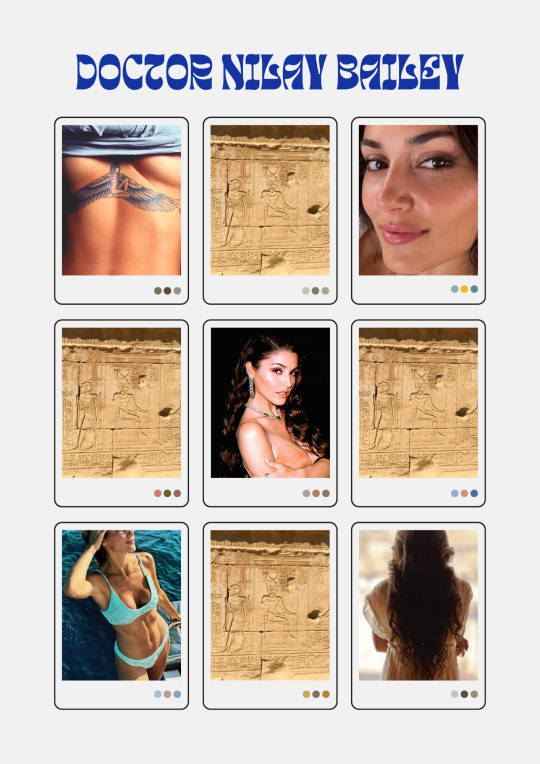
𓂀 𝙱𝙻𝚄𝙴 𝙷𝙰𝚁𝙱𝙾𝚁 𝚃𝙰𝚂𝙺 𝟶𝟶𝟻 — 𝙻𝙴𝚃'𝚂 𝙶𝙴𝚃 𝙿𝙷𝚈𝚂𝙸𝙲𝙰𝙻.
HEIGHT: 5'0''.
AVERAGE WEIGHT: ~135lbs.
BODY TYPE: Slender with slight curves and athletic, toned muscles.
POSTURE: Straight posture, it's the only straight thing about her.
FLEXIBILITY: Nilay has been doing yoga since she was nine, so she is incredibly flexible. Along with being athletic and active with exercise (and in other ways), she's been able to keep her flexibility stable as she's gotten older.
DENTAL HYGIENE: Straight, pearly white teeth. She take good care of her teeth and sees her dentists regularly. Her breath typically smells like cinnamon due to her toothpaste, mouthwash, and favourite gum and mints being cinnamon-flavoured.
BODY TEMPERATURE: Runs slightly cold.
EYE COLOR: Dark brown.
EYESIGHT: Above average, but wears a thicker framed reading glasses when she's working for a long time and needs to stare at a screen or books for awhile.
HAIR COLOR: Soft black with reddish undertones ( inspo ).
HAIR TEXTURE: 3c waves/1c curls ( inspo ).
HAIR STYLE: Her hair is long, reaching her midback, with some bangs and face-framing pieces. While at work, she typically wears her hair in a bun or down; While not at work, she wears her hair in braids or ponytails; One of her most worn styles, whether at work or not, is an up-down style that highlights her curls. ( inspo, inspo, inspo ).
PROMINENT SCARS ( trigger warning: bullying, abuse, pregnancy, and attack mentions/insinuations ) : Has a couple of minor scars from playing around a lot as a child. Has some minor burn scars on the palms of her hands, knees, and shins from when a group of her bullies stuffed her in a metal dog kennel during a hot day in Cairo, causing the kennel to become overheated and the metal to leave some thin one-inch burn scars. Her most prominent scars are on her stomach. She has a scar that’s become light now on her lower abdomen from her Cesarean-section to deliver Hattie, though it was reopened for her C-section op with Rhia. She also has around five, scattered one inch scars in various places on her stomach, due to her attack back in July 2021 and being stabbed multiple times.
SKIN TONE: Light Olive/Beige with Olive and warm undertones, can become extremely tan in the summer.
FRECKLES: She has a few across her body in various places, but mainly some across her nose and cheeks.
MOLES: None.
BIRTHMARKS: She has a small beauty mark on the left corner of her lips and then a small pale patch behind her right ear that's in the shape of a pomegranate.
TATTOOS:
She currently has twelve, with more to come: A tattoo of her Hebrew name, Ye'or, יאור, on the back of her neck. In the same spot as Hande's butterfly tattoo. She has a small Ancient Egyptian-inspired Lotus outline tattoo on her lower back. She got both an Evil Eye and Hand of Hamsa tattoo on her right inner arm above her elbow. On her right side, she has the cartouche of Pharaoh Hatshepsut tattooed on her. On her right thigh, she has a tattoo of an Egyptian Cypress tree with pearls on the branches. Underneath it is Shajar al-Durr’s name in Arabic, which means "tree of pearls". On her left thigh, she has an outline of the Atik Valide Mosque tattooed there. Before she left for Egypt, she got a small blank Polaroid picture tattooed on her left side. A few months after Hattie was born, she got a tattoo of an Egyptian lotus in the blank picture with Hattie’s birthday in Roman numerals written underneath. Right next to her tattoo dedicated to Hattie, she has a dove tattoo featuring a mama dove and two baby doves sitting on an olive branch, dedicated to her girls. Along with those two tattoos dedicated to her daughters, she had gotten another set dedicated to them: both of their initials (HAB and RNF) tatted on her right wrist. After the premiere of her first docuseries that she hosted, she got her eleventh tattoo in honour of the next step in her career: the Egyptian goddess, Aset/Isis, located on her chest beneath her breast, like Rihanna’s. She’s has a small rainbow next to her Polaroid with the lotus and the mama & baby doves duo, in honour of Rhiannon.
PIERCINGS: Standard lobe piercings (both), upper lobe piercings (both), auricle piercings (both), helix piercing (left), stomach piercing, and nipple piercings. Debating on getting a Medusa piercing.
DOMINATING HAND: Ambidextrous, favoring her left.
VOICE: Her speech style is formal and intimate with a medium tone. Primarily Egyptian with a light southern Turkish accent. Her voice is inspired by Egyptian actress, Yasmine Sabri, and Hande Ercel's.
STYLE: Varies on her mood, activities, and the season. Typically bohemian/global-inspired and items from global brands, adventurer, vintage, artsy, casual, comfy athletic, dark and light academic, but can also glam it up for the occasion.
ACCESSORIES: Is a major necklace and ring girl. Prefers gold jewelry. Loves to layer her necklaces and can typically be seen wearing her locket, her Rhiannon pendant, a Sephardi-style gold and sapphire Magen David, and a gold Chai (“life),חי. Typically wears jewelry from Awe Inspired, Common Era, and some of her favourite Judaica stores and Jewish artists.
SHOE SIZE: 7 US.
More can be found here!
10 notes
·
View notes
Text
I have discovered ancient Egyptian toothpaste. Apparently, it was made with pepper, mint, iris, and salt. It was their method for white teeth. They'd make a poultice with it and apply it. Could use it alongside a chew stick most likely. Mint I can assume for the flavor and lasting scent, salt and pepper for their abrasive properties, and not sure what the iris is about. Not sure what of this is specifically for cleaning other than the abrasiveness. This does mean you could 100% make toothpaste without any store-bought ingredients. I'll have to mess around with stuff.
9 notes
·
View notes
Text
Ancient Egyptians recipe for toothpaste
A papyrus from the 4th century AD depicts the recipe for Egyptian toothpaste, which includes "One drachma of rock salt, one of mint, one of dried iris flower, and 20 grains of pepper – to be crushed and mixed into a paste"

Papyrus Collection of the Austrian National Library P.Vindob. G 30914
#archeology#egyptology#ancient egypt#museumfinds#toothpaste#nothing like brushing your teeth with pepper in the morning#tridentandtales
3 notes
·
View notes
Text
How Old Is Your Umbrella?
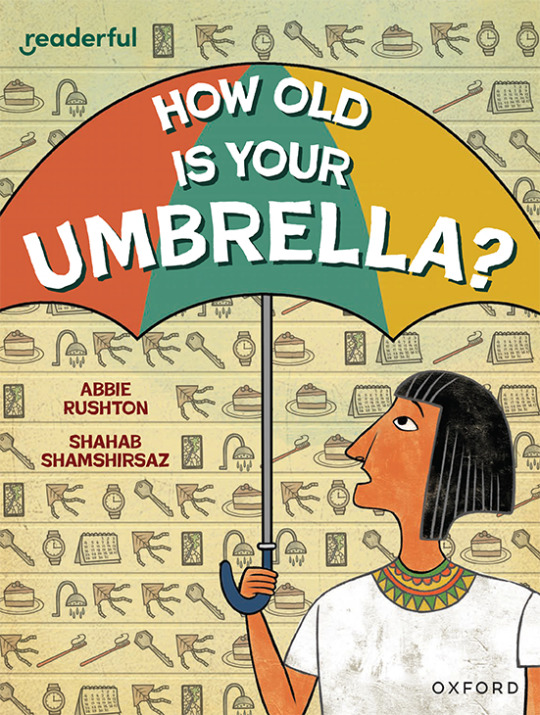
Lots of things that we use today were actually invented by people a very long time ago. Find out about ancient Egyptian toothpaste, kites from thousands of years ago, and what the Ancient Greek recipe for cheesecake is!
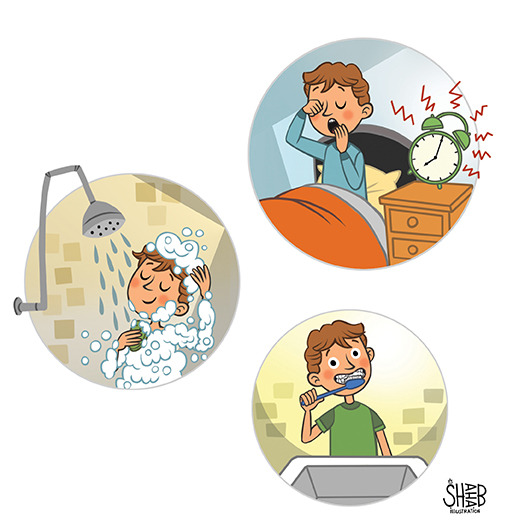
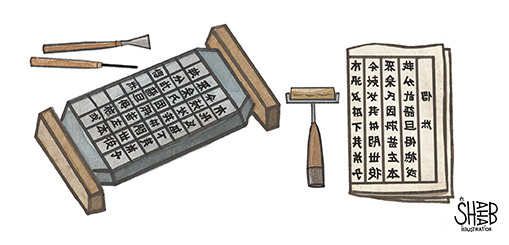
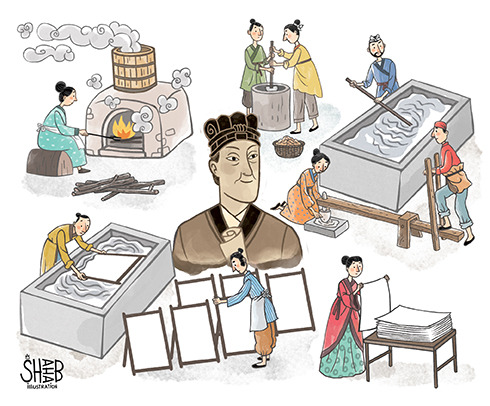
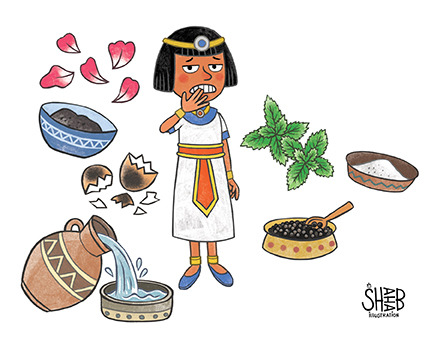
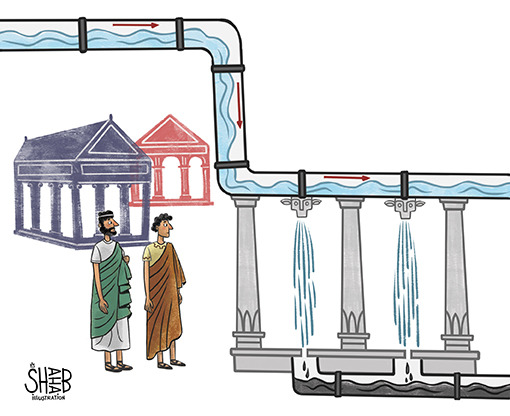

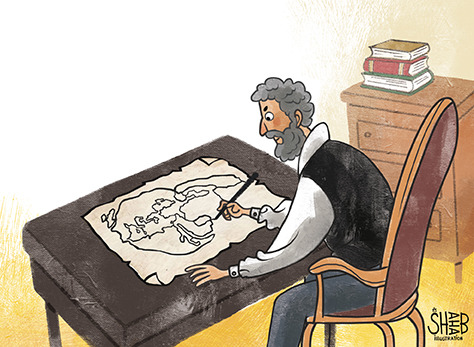
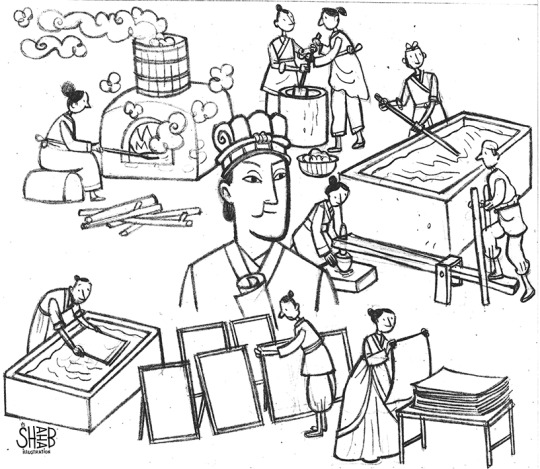
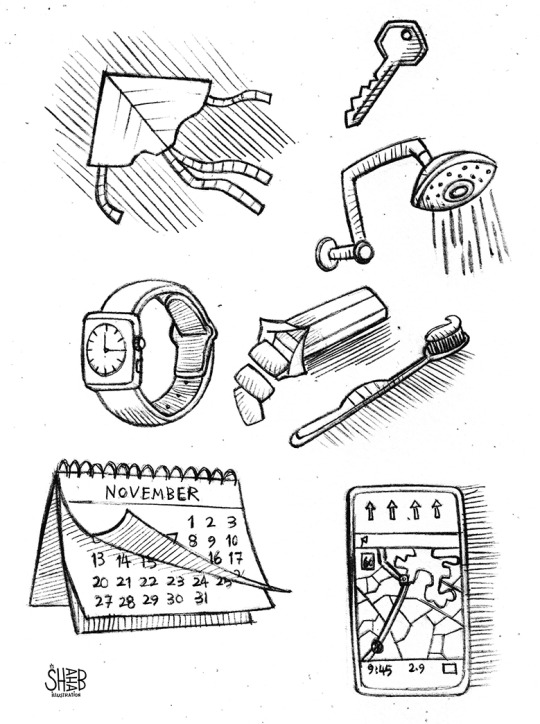
How Old Is Your Umbrella?
This book is from Readerful's Independent Library. It is for children aged 7 to 8 to read without support.
by Abbie Rushton
Publisher : OUP Oxford
#illustration#illustrazione#book illustration#illustrated book#art#educational books#non fiction#children's book art#child reader#children#art gallery#children's book illustration#illustrator#illustrative art#illustragram
2 notes
·
View notes
Text
37BJWSU407ZOPTUL Ancient Egyptians: The Surprising Truth About Their Toothpaste! published first…
37BJWSU407ZOPTUL Ancient Egyptians: The Surprising Truth About Their Toothpaste! published first… 37BJWSU407ZOPTULAncient Egyptians: The Surprising Truth About Their Toothpaste! published first…37BJWSU407ZOPTULAncient Egyptians: The Surprising Truth About Their Toothpaste! published first…37BJWSU407ZOPTULAncient Egyptians: The Surprising Truth About Their Toothpaste! published…
0 notes
Text
37BJWSU407ZOPTUL Ancient Egyptians: The Surprising Truth About Their Toothpaste! published first…
37BJWSU407ZOPTUL Ancient Egyptians: The Surprising Truth About Their Toothpaste! published first… 37BJWSU407ZOPTULAncient Egyptians: The Surprising Truth About Their Toothpaste! published first…37BJWSU407ZOPTULAncient Egyptians: The Surprising Truth About Their Toothpaste! published first…37BJWSU407ZOPTULAncient Egyptians: The Surprising Truth About Their Toothpaste! published…
0 notes
Text
37BJWSU407ZOPTUL Ancient Egyptians: The Surprising Truth About Their Toothpaste! published first on…
37BJWSU407ZOPTULAncient Egyptians: The Surprising Truth About Their Toothpaste! published first on… 37BJWSU407ZOPTULAncient Egyptians: The Surprising Truth About Their Toothpaste! published first on…37BJWSU407ZOPTULAncient Egyptians: The Surprising Truth About Their Toothpaste! published first on…37BJWSU407ZOPTULAncient Egyptians: The Surprising Truth About Their Toothpaste! published first…
0 notes
Text
37BJWSU407ZOPTUL Ancient Egyptians: The Surprising Truth About Their Toothpaste! published first…
37BJWSU407ZOPTUL Ancient Egyptians: The Surprising Truth About Their Toothpaste! published first… 37BJWSU407ZOPTULAncient Egyptians: The Surprising Truth About Their Toothpaste! published first…37BJWSU407ZOPTULAncient Egyptians: The Surprising Truth About Their Toothpaste! published first…37BJWSU407ZOPTULAncient Egyptians: The Surprising Truth About Their Toothpaste! published…
0 notes
Text
37BJWSU407ZOPTUL Ancient Egyptians: The Surprising Truth About Their Toothpaste! published first on…
37BJWSU407ZOPTULAncient Egyptians: The Surprising Truth About Their Toothpaste! published first on… 37BJWSU407ZOPTULAncient Egyptians: The Surprising Truth About Their Toothpaste! published first on…37BJWSU407ZOPTULAncient Egyptians: The Surprising Truth About Their Toothpaste! published first on…37BJWSU407ZOPTULAncient Egyptians: The Surprising Truth About Their Toothpaste! published first…
0 notes
Text
37BJWSU407ZOPTUL Ancient Egyptians: The Surprising Truth About Their Toothpaste! published first…
37BJWSU407ZOPTUL Ancient Egyptians: The Surprising Truth About Their Toothpaste! published first… 37BJWSU407ZOPTULAncient Egyptians: The Surprising Truth About Their Toothpaste! published first…37BJWSU407ZOPTULAncient Egyptians: The Surprising Truth About Their Toothpaste! published first…37BJWSU407ZOPTULAncient Egyptians: The Surprising Truth About Their Toothpaste! published…
0 notes
Text
37BJWSU407ZOPTUL Ancient Egyptians: The Surprising Truth About Their Toothpaste! published first…
37BJWSU407ZOPTUL Ancient Egyptians: The Surprising Truth About Their Toothpaste! published first… 37BJWSU407ZOPTULAncient Egyptians: The Surprising Truth About Their Toothpaste! published first…37BJWSU407ZOPTULAncient Egyptians: The Surprising Truth About Their Toothpaste! published first…37BJWSU407ZOPTULAncient Egyptians: The Surprising Truth About Their Toothpaste! published…
0 notes
Text
37BJWSU407ZOPTUL Ancient Egyptians: The Surprising Truth About Their Toothpaste! published first…
37BJWSU407ZOPTUL Ancient Egyptians: The Surprising Truth About Their Toothpaste! published first… 37BJWSU407ZOPTUL Ancient Egyptians: The Surprising Truth About Their Toothpaste! published first… 37BJWSU407ZOPTULAncient Egyptians: The Surprising Truth About Their Toothpaste! published first…37BJWSU407ZOPTULAncient Egyptians: The Surprising Truth About Their Toothpaste! published…
0 notes